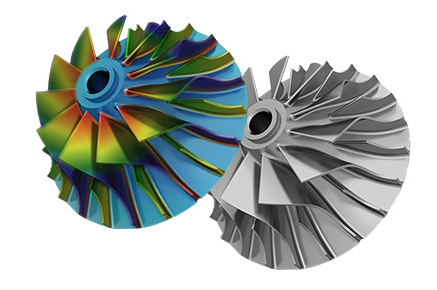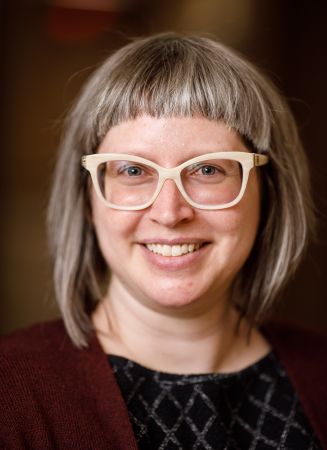 A recent award from the Defense Advanced Research Projects Agency (DARPA) will bring together researchers from Massachusetts Institute of Technology (MIT, lead), Carnegie Mellon University, and Lehigh University under the Multiobjective Engineering and Testing of Alloy Structures (METALS) program. The team will research novel design tools for the simultaneous optimization of shape and compositional gradients in multi-material structures that complement new high-throughput materials testing techniques. They will consider an additively manufactured bladed disk (blisk) commonly found in turbomachinery (including jet and rocket engines) as an exemplary challenge problem.
A recent award from the Defense Advanced Research Projects Agency (DARPA) will bring together researchers from Massachusetts Institute of Technology (MIT, lead), Carnegie Mellon University, and Lehigh University under the Multiobjective Engineering and Testing of Alloy Structures (METALS) program. The team will research novel design tools for the simultaneous optimization of shape and compositional gradients in multi-material structures that complement new high-throughput materials testing techniques. They will consider an additively manufactured bladed disk (blisk) commonly found in turbomachinery (including jet and rocket engines) as an exemplary challenge problem.
Different locations in the blisks require different thermomechanical properties and performance, such as resistance to creep, low cycle fatigue, high strength, etc. Large scale production also necessitates consideration of cost and sustainability metrics such as sourcing and recycling of alloys in the design. Currently, with standard manufacturing and design procedures, one must come up with a single magical material, composition, and processing parameters to meet “one part-one material” constraints. Desired properties are also often mutually exclusive prompting inefficient design tradeoffs and compromises. For example, one material may be optimal for a particular location in a component but leaves other locations exposed to failure or requires a critical material to be carried throughout an entire part when it may only be needed in a specific location. With the rapid advancement of additive manufacturing processes that are enabling voxel-based resolutions in property and compositional gradients, unique opportunities for leap-ahead performance in structural components are now possible. The team will research foundational Generative AI models that leverage these opportunities to efficiently generate solutions to complex multi-material design challenges. The main question investigated in this team’s DARPA METALS project is how to strategically develop high-throughput material testing and materials informatics pipelines to enable next-generation continuum material design and AI technologies in the context of rotor-type geometries.
The lead PI is Dr. Z. Cordero (MIT) and the co-PIs include Dr. Z. Spakovszky, Dr. J. Hart, and Dr. F. Ahmed from MIT, along with Dr. S.M. Taheri-Mousavi (CMU), and Dr. N. Vermaak (Lehigh). The team combines expertise spanning hybrid ICME and machine-learning-based material and process design, precision instrumentation, metrology, topology optimization, deep generative modeling, additive manufacturing, materials characterization, thermostructural analysis, and turbomachinery.
“This project could have important implications across a wide range of aerospace technologies. For example, the insights from this work may enable more reliable, reusable, rocket engines that will power the next generation of heavy-lift launch vehicles. This project merges classical mechanics analyses with cutting-edge generative AI design technologies to unlock the plastic reserve of compositionally graded alloys allowing safe operation in previously inaccessible conditions.” ~ Z. Cordero
The project will be carried out over three years.
This research will be developed with funding from the Defense Advanced Research Projects Agency (DARPA) under contract #HR00112420303. The views, opinions, and/or findings expressed are those of the author and should not be interpreted as representing the official views or policies of the Department of Defense or the U.S. Government and no official endorsement should be inferred.

